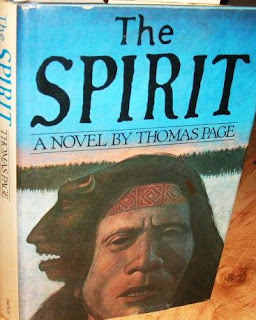Two young women, crude simpletons both, talk their rich aging aunt of the title into participating in a seance—we're in New Orleans, if you must know—and, coerced by an occult con man who only made me think of this guy, Miss Finney "learns" from the "spirit world" that she can become immortal if she simply, you know, kills people ("You must take a life and add to yours"). But she's in a wheelchair how can she do that?? Why, she'll get her two turd nieces to do the actual dirty work of killing, which Miss Finney brings up over coffee. But it's a scam solely to get money from the old biddy since they're not going to actually kill anyone and then oh my god it becomes all too real!
1st Tor edition, 1982
The first murder sequence is staged and executed in a manner reminiscent of a middle-school play made up and performed by, well, middle-schoolers. Aunt Finney's nieces, Brook and Willa (you know their names because neither one stops saying the other's) set up a rapey handyman (ain't they all) to take the "fall." They're gonna fake kill him, see, and collect $5,000 apiece ("Isn't that rather high?") from old Auntie!
Except that's not how it turns out, and from there I think there's some supernatural shit—book spine states "supernatural horror" under Tor monster logo—but by then my eyeballs were melting down my face like I was a Zap comix. I'd re-commit, take a deep breath, and try to read more, in good faith, but that was fuckin torture. I physically couldn't read this book any longer. Even with dialogue like "I've killed, Detective Scarne. I think that is pretty legal and pretty problematical!"
Skipping to pages near the end, I discovered there's a Satanic cult ("He cannot speak. He has no tongue. Look at the power of Satan, dear Brook"), like you'd find in a satirical Levin, and bloody nonsense around the climax; I found this passage at random:
Except that's not how it turns out, and from there I think there's some supernatural shit—book spine states "supernatural horror" under Tor monster logo—but by then my eyeballs were melting down my face like I was a Zap comix. I'd re-commit, take a deep breath, and try to read more, in good faith, but that was fuckin torture. I physically couldn't read this book any longer. Even with dialogue like "I've killed, Detective Scarne. I think that is pretty legal and pretty problematical!"
Skipping to pages near the end, I discovered there's a Satanic cult ("He cannot speak. He has no tongue. Look at the power of Satan, dear Brook"), like you'd find in a satirical Levin, and bloody nonsense around the climax; I found this passage at random:
Men and women alike participated in the blood anointing of her body. Hands coursed sensually across her breasts, fingers ushered blood into her orifices... The participants in the ritual retreated and she could see that a thing, a vulgar form, was approaching her. Her efforts to cope with the horror were futile. She experienced total revulsion.... The form's skin was covered with open sores that dripped a gray mush, bearing an odor from the bowels of the earth... Its member was erect...
However it's all bargain basement rehash of shit any horror fic fan knows by heart. Turns out Dempsey was more a political thriller writer of the kinds of '80s novels with swastikas on the cover; his attempt at horror is unmitigated hackwork. I had to give up for my taste and my sanity. In all honesty Miss Finney is one of the special handful of pitiful horror novels I've attempted to read that make me despair: why am I, an adult grown-ass middle-aged man, reading, or trying to read, such shallow shitty pandering carelessly-produced garbage? Why do I do this to myself? How it got two printings from Tor boggles the mind.

























































